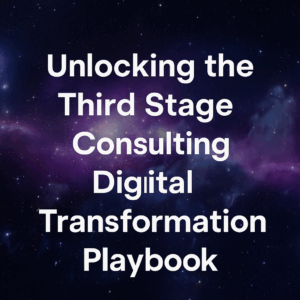Business Process Improvements can result in cutting costs and even increasing production. Doing so is also a key step in a successful digital transformation since it helps in figuring out which software solution would be the best fit depending on your most pressing needs as an organization. But, how do you know which processes to focus on? The following steps are the roadmap to business process management.
Table of Contents
ToggleEvaluate the Current State
The unfortunate reality is that many organizations don’t necessarily have the budget, time, or resources to spend redefining business processes. They tend to skip this evaluation phase altogether. However, it is important to review what is working today and where there is room for improvement. To get started, we should revisit our general business strategy. Identify the processes in place that drive the business toward that overarching strategy, and prioritize them as we begin our management and optimization efforts.
- Walk through the processes that are meant to move the needle toward your corporate strategy. Look at them from an end-to-end perspective, and map out the blueprint that outlines the state of the current processes. For example – if the overarching business strategy is to be the best in customer service, then you must look at every front-facing process that touches the customer. Map it out from start to finish, down to what happens behind the scenes to deliver the current level of customer service.
- Create a blueprint that outlines those current state processes. Sit with it, learn it, understand it, and poke holes in it. How could it be better?
Do this with every process that relates to the corporate strategy before moving to the next step.
Design Business Process Improvements
Once we’ve mapped out all the prioritized processes from end to end and understand their workflows, it’s time to classify them and put them in the Hierarchy of Business Processes. Evaluate each process and categorize them into the two following buckets:
- Core Competencies: These are the things that make us who we are as an organization. It’s why we win against the competition, what we do well and what we want to continue to do well. It’s our organization’s “secret sauce,” and it usually has to do with aspects of our business that are either customer-facing, employee experience-based, or product-based. It’s the things that we tailor and customize to make our organization unique. Without them, we’d lose our edge and our brand would fall flat.
- Commodity Processes: These are things like accounts payable or purchase order processing. It’s what all organizations must do, and there are similar processes in place from company to company. These are the processes that don’t need customization because they’re meant to be generic, and they’re efficient being so.
Once the business processes are defined, it’s time to drill down even further on existing processes to find the pain points. A pain point can be masked in various ways, and our job is to be cognizant of the different personas those pain points can take. The key is to look for tension and hindrance. Consider the following questions:
- Where is there tension in communication or collaboration?
- Where does the wheel slow down?
- Are there certain tasks within a given process that need to be completed quicker or more efficiently?
- Are there certain data elements that could help someone do their job a bit better than they are currently doing it?
Uncovering the answers to these questions is often done through process mining. The quantitative data from process mining helps us better understand what we can do to improve without losing the unique differentiators that set us apart from our competitors. With that, it’s also helpful to understand what other companies are doing that works and does not work.
Once the pain points are recognized and understood, there are two paths we can take.

Path 1. Evaluate what we could do today to make our processes better.
Comb through existing processes. What is working well, and what do we need to fix? Before making any other high-level shifts or changes across the organization, it’s critical to fix the fixable prior to implementing any new technology. It’s possible that all that needs to be done is an increase in communication, so a weekly status meeting could be beneficial.
Begin by optimizing operations, and consider technology once operations are optimized without tech. Depending on which digital transformation pillar the problem process resides in, your response could vary. If it’s a problem with people, then it’s often something that can rarely be resolved with technology.
Take the example of a team that isn’t collaborating. How do we get them to collaborate? Some say implement new technology to enable more seamless communication and workflows. That is an option, but the reality is that the technology will not be able to alleviate the cultural challenges that pose the root of the issue. Before shopping for software that could help, we must start with the culture and behavior of the team, department, and even the organization.
Maybe we focus on creating process owners or process centers of excellence. By doing so, we would enable the team to work together in figuring out how end-to-end processes work. Maybe we adjust compensation and the way we measure and reward the team to enable less competition and more collaboration. These elements will move the needle more when the issue stems from a people’s perspective. Once these preliminary adjustments are made, then we can consider technology tools down the line to help fuel the fire and build momentum in collaborations.
If the problem process is primarily operational, there are a few levers to pull to ensure processes are optimized and clean. Many times, technology can, indeed, serve as a means of optimization in a given operational process. However, until the groundwork is laid out to determine the most seamless end-to-end process, technology won’t be as effective as it can be.
The automation processes in question should be as clean and lean as possible before pursuing a technology. This means all extra, unnecessary steps should be removed, any redundancies should be consolidated, and the process should be crisp enough to insert into the software. Once our processes are mapped out with intention, it is a good time to consider the technologies that will automate processes and further drive efficiencies.
Sometimes, non-technological investments will drive the most results. Whether the problem processes are related to operations or the people on the team, we must start by doing our due diligence. If things work from your initial, non-technological optimizations, then great! If not, consider the other path.
Path 2. Determine the pain points that can be alleviated with software.
Many times, we can optimize our processes without implementing software. Other times, the only way to optimize a process is by incorporating some level of technology to enable automation. If we get our organization to its most optimized state as-is on an operational and people level, then we should consider the third pillar: technology. So long as we shape up and optimize before we invest in technology, technology may be the very element keeping us from scaling.
This is where our digital strategies begin to take shape. The whole point of implementing a new enterprise software is to help drive efficiencies. Go back to the prioritized processes that still have underlying pain points, or have room for improvement, even after the effort made to optimize. Focus on key competitive differentiators that drive our business superior in our industry and take note of which processes could use a more standardized approach and which ones need to remain flexible.
Take note of the processes that are of the utmost importance and rank them based on how important they are in achieving the corporate goals and objectives. By doing so, we are making a must-have list to take with us as we select the software that will be our best fit.
If you’re exploring ways to improve processes and optimize operations, we invite you to explore our countless whitepapers and articles around the best practices to move the needle. Furthermore, we are always just one email or phone call away. Don’t hesitate to reach out to talk through ideas and explore how you can maximize your existing operations.





